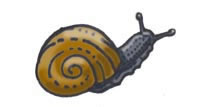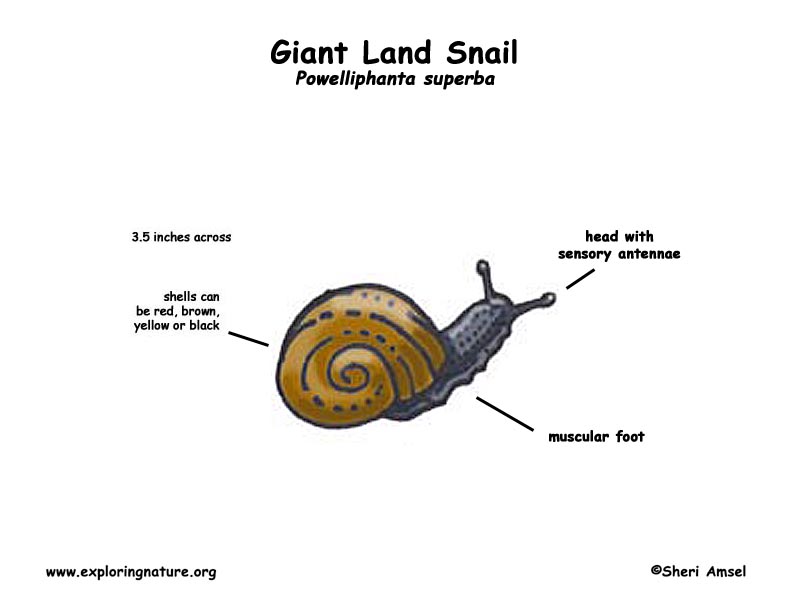

They are found in New Zealand.
They live in the wet leaf litter on the forest floor in wetter high altitude forests (some species live on grasslands).
Their shells can be red, brown, yellow or black. This largest species can reach 3.5 inches across (the size of a man’s fist) and weigh more than 3 ounces.
They are active at night (nocturnal).
They are carnivorous and eat earthworms and slugs.
Predators brought by visitors to the island like rats, possums and pigs eat them. Their native predators include thrushes (small bird) and hedgehogs.
Each snail has both female and male reproductive body parts (hermaphrodites) so can mate with any other snail. They lay 5-10 pink, half-inch long, hard-shelled eggs.
Kingdom: Animalia
Phylum: Mollusca
Class: Gastropoda
Order: ?
Family: Rhytididae
Genus: Powelliphanta
Species: P. superba
When you research information you must cite the reference. Citing for websites is different from citing from books, magazines and periodicals. The style of citing shown here is from the MLA Style Citations (Modern Language Association).
When citing a WEBSITE the general format is as follows.
Author Last Name, First Name(s). "Title: Subtitle of Part of Web Page, if appropriate." Title: Subtitle: Section of Page if appropriate. Sponsoring/Publishing Agency, If Given. Additional significant descriptive information. Date of Electronic Publication or other Date, such as Last Updated. Day Month Year of access < URL >.
Amsel, Sheri. "Snail (Giant Land)" Exploring Nature Educational Resource ©2005-2024. December 2, 2024
< http://exploringnature.org/db/view/552 >

